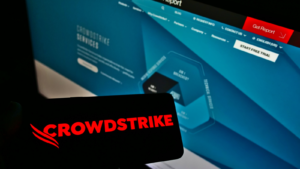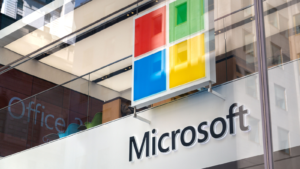If You Can Only Buy One Cybersecurity Stock in May, It Better Be One of These 3 Names

Source: Song_about_summer / Shutterstock
The cybersecurity industry has a vast growth rate. Fortune Business Insights projects the industry will maintain a 13.8% compounded annual growth rate from now until 2030.
Businesses need cybersecurity solutions to keep their digital assets and sensitive data safe from hackers. Cybercriminals find themselves in a lucrative industry, and their presence has created the need for cybersecurity firms. While the industry is projected to maintain double-digit growth rates for several years, some companies are more equipped for the boom than others. These are three of the top cybersecurity stocks to buy.
CrowdStrike (CRWD)

Source: T. Schneider / Shutterstock.com
CrowdStrike (NASDAQ:CRWD) has been crushing the stock market. It’s up 40% year-to-date and has soared more than 450% over the past five years. While those gains are incredible, many analysts believe CrowdStrike isn’t done quite yet. The average price target for the Strong Buy cybersecurity firm indicates a 13% upside. Only one of 37 analysts rated the stock as a Hold. Every other analyst gave it a Buy rating.
It’s easy to see why many analysts are on board with the stock. While the historical gains tell part of the story, CrowdStrike’s Q4 FY24 results highlight a financially robust firm. Revenue increased by 33% year-over-year (YOY) to reach $845.3 million. The company also closed out the fiscal year with $3.44 billion in annual recurring revenue. This figure is up by 34% YOY.
Profitability improved in the quarter, making the stock more attractive. CrowdStrike has delivered high revenue growth for a while but turning a $47.5 million GAAP net loss into $53.7 million in GAAP profits within a year indicates the stock can generate meaningful long-term gains.
Alphabet (GOOG, GOOGL)

Source: IgorGolovniov / Shutterstock.com
Alphabet (NASDAQ:GOOG, NASDAQ:GOOGL) helps companies store their data in Google Cloud. The tech giant uses cybersecurity solutions to keep its customers’ information safe. Alphabet has made an effort in recent years to acquire cybersecurity firms and expand its own offerings. The tech conglomerate’s most noteworthy acquisition was Mandiant, a cybersecurity firm that cost $5.4 billion.
Investments in cybersecurity have helped Alphabet diversify its revenue streams. While advertising still makes up the bulk of total revenue, Google Cloud now makes up more than 10% of Alphabet’s total revenue. Artificial intelligence initiatives can generate additional revenue growth.
Speaking of revenue growth, that figure came in at 15% YOY in Q1 2024. Net income soared by 57% YOY as the company continued to trim its headcount and carefully monitored its expenses. Alphabet trades at a reasonable 27.1 P/E ratio and offers a 0.45% yield. Shares are up by 26% year-to-date and have rallied 210% over the past five years.
Microsoft (MSFT)

Source: The Art of Pics / Shutterstock.com
Microsoft (NASDAQ:MSFT) is a tech titan with exposure to numerous verticals. Cloud computing, artificial intelligence, gaming, social media, business software and advertising are some of its segments. Those combined segments resulted in 17% YOY revenue growth and 20% YOY net income growth in Q3 FY24.
Microsoft Cloud has several cybersecurity components, one of the company’s fastest-growing segments. Microsoft Cloud revenue increased by 23% YOY and made up $35.1 billion of the firm’s $61.9 billion in total revenue. While Microsoft keeps many businesses safe from cyberattacks, no company is immune. Microsoft recently endured a cyberattack of its own, but the response should leave investors optimistic that something like this won’t happen often.
The firm is now attaching executive compensation to a successful cybersecurity strategy. If the company gets hacked, executives now stand to lose a lot of money. There’s more financial incentive than ever before for Microsoft to fortify its defenses and keep companies and individuals safe.
On this date of publication, Marc Guberti held long positions in GOOG and MSFT. The opinions expressed in this article are those of the writer, subject to the InvestorPlace.com Publishing Guidelines.



